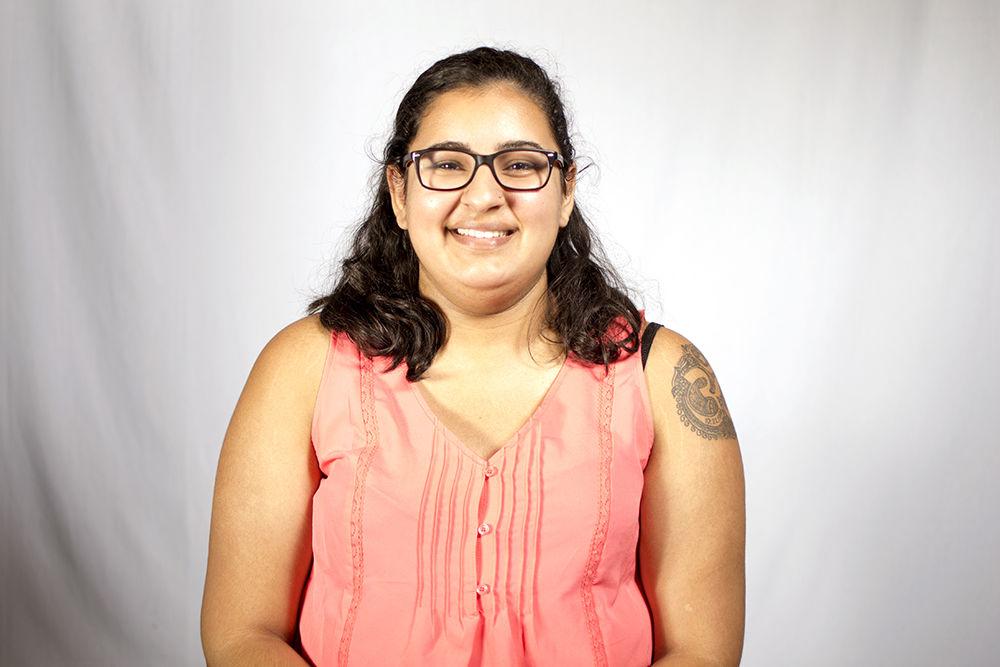
Aditi Dholakia
Hundreds of thousands of people, packed tightly on a three-quarter mile stretch of Pennsylvania Avenue. Hours of standing, chanting, jostling, waiting, with a whole congregation of people searching for justice just outside the Capitol Building. The March for Our Lives on March 24 in Washington, D.C., was a rally cry heard across the nation — across the world.
And while the crowd consisted of a people diverse in race, class, gender and, perhaps most widely, age, the speakers on stage all had two things in common: all of them were under 20 years old, and all of them had been personally affected by senseless gun violence.
Cameron Kasky, Trevon Bosley, Delaney Tarr, Sarah Chadwick, Edna Chavez, Alex Wind, Zion Kelly, David Hogg, Naomi Wadler*, Mya Middleton, Matt Post, Christopher Underwood, Jaclyn Corin, Ryan Deitsch, Aalayah Eastmond, Sam Fuentes, Alex King, D’Angelo McDade, Matthew Soto, Emma Gonzalez.
These speakers — students, children, ranging in age from 11 to 19 years old — have been, and will continue to spearhead change in this country and around the world.
That children are the future is a notion that has existed for generations, across political party divides and socioeconomic boundaries. Children are, after all, theoretically malleable; they’re learning and experiencing the world in real time, while relying on adults, or those with more experience and knowledge, to put everything into context for them. It is this reliance that has given said adults the illusion that in providing context, they can control the narrative in which their children live.
However, as much as adults consider children to be the future — insofar as to carry out their wills and demands — what we’re seeing today is children being forced into quasi-adulthood. These are children who are taking a firm grasp of the present and using their own knowledge and experience to put events in context and instigate change.
This kind of youth-led action and activism is not a new thing, particularly in this country, and especially not for marginalized communities and communities of color. Children have been underestimated by adults for practically all of history, but, as the Supreme Court stated in their ruling for Tinker v. Des Moines, “Students don’t ‘shed their constitutional rights to freedom of speech or expression at the schoolhouse gate.’”
Just as youth-led movements have led to landmark changes around the country throughout history, the March for Our Lives and the students organizing it have already been the catalysts for positive change in the fight for gun control.
In the 40 days since the shooting at Marjory Stoneman Douglas High School in Parkland, Florida, the majority Republican legislature and Republican governor Rick Scott in Florida have already passed a law tightening restrictions around the purchase and use of guns in the state. Although the law doesn’t address many of the concerns students still have about the use of guns, it’s certainly a step toward reform.
On a national scale, the President announced Friday, just one day before the March for Our Lives, that his administration is working to issue a ban on bump stocks, a gun accessory that allows semi-automatic weapons to mimic automatic fire. These steps, minuscule as they may be, are only being taken because of the relentless advocacy and even lobbying of students from Parkland and across the country who have been permanently affected by gun violence or the fear thereof.
In their speeches at the march, the survivors from Stoneman Douglas emphasized repeatedly that the march, and this movement as a whole, is only the beginning of a revolution taking hold of the nation. “The march is not the climax of this movement; it is the beginning … We must protect, educate and inspire the future,” Kasky said.
Alongside Stoneman Douglas students, speakers from communities historically ravaged by gun violence in cities like Los Angeles, Chicago and Brooklyn reminded march attendees that they and their peers have grown up with constant fear and paranoia, not only within their schools but also within their communities and outside of their homes.
Zion Kelly, whose twin brother Zaire was a victim of gun violence in New York, recognized the way the fear of gun violence permeates the everyday lives of children across the nation. “I am here to represent the hundreds of thousands of students who live every day in constant paranoia,” Kelly said.
At the end of the day, it is children who, at the expectation of upholding our future, carry the burden for change, and thus must be the ones to organize and lead efforts to achieve said change. Why today’s adults are so surprised at the way the children, upon whom they have placed the burden of the future, are taking such fierce hold of the present, is beyond me. One thing is for sure: this truly is just the beginning.
This movement is a movement that is by students, for students, all of whom have been or have the potential to be affected by gun violence. In the words of Christopher Underwood, an 11-year-old speaker who, at age five, lost his older brother to gun violence, “For me, I would like to not worry about dying.”
Students should not have to be concerned about whether or not they will die in school, outside of their home, on the playground, in the streets. At this point in their lives — our lives — getting an education and living out every moment should be the utmost priority.
*Editor’s Note: This column has been changed to reflect the correct spelling of Naomi Wadler’s name.